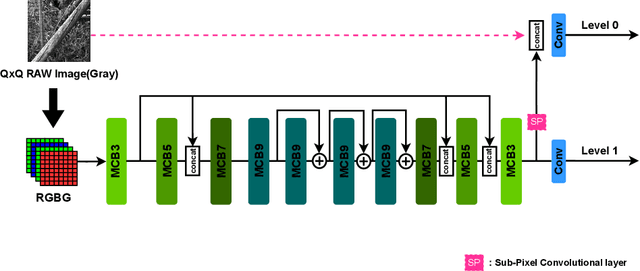Jinsu Kim
ECoRAG: Evidentiality-guided Compression for Long Context RAG
Jun 06, 2025Abstract:Large Language Models (LLMs) have shown remarkable performance in Open-Domain Question Answering (ODQA) by leveraging external documents through Retrieval-Augmented Generation (RAG). To reduce RAG overhead, from longer context, context compression is necessary. However, prior compression methods do not focus on filtering out non-evidential information, which limit the performance in LLM-based RAG. We thus propose Evidentiality-guided RAG, or ECoRAG framework. ECoRAG improves LLM performance by compressing retrieved documents based on evidentiality, ensuring whether answer generation is supported by the correct evidence. As an additional step, ECoRAG reflects whether the compressed content provides sufficient evidence, and if not, retrieves more until sufficient. Experiments show that ECoRAG improves LLM performance on ODQA tasks, outperforming existing compression methods. Furthermore, ECoRAG is highly cost-efficient, as it not only reduces latency but also minimizes token usage by retaining only the necessary information to generate the correct answer. Code is available at https://github.com/ldilab/ECoRAG.
Design Optimization of Nuclear Fusion Reactor through Deep Reinforcement Learning
Sep 12, 2024



Abstract:This research explores the application of Deep Reinforcement Learning (DRL) to optimize the design of a nuclear fusion reactor. DRL can efficiently address the challenging issues attributed to multiple physics and engineering constraints for steady-state operation. The fusion reactor design computation and the optimization code applicable to parallelization with DRL are developed. The proposed framework enables finding the optimal reactor design that satisfies the operational requirements while reducing building costs. Multi-objective design optimization for a fusion reactor is now simplified by DRL, indicating the high potential of the proposed framework for advancing the efficient and sustainable design of future reactors.
Supervised low-rank semi-nonnegative matrix factorization with frequency regularization for forecasting spatio-temporal data
Nov 15, 2023Abstract:We propose a novel methodology for forecasting spatio-temporal data using supervised semi-nonnegative matrix factorization (SSNMF) with frequency regularization. Matrix factorization is employed to decompose spatio-temporal data into spatial and temporal components. To improve clarity in the temporal patterns, we introduce a nonnegativity constraint on the time domain along with regularization in the frequency domain. Specifically, regularization in the frequency domain involves selecting features in the frequency space, making an interpretation in the frequency domain more convenient. We propose two methods in the frequency domain: soft and hard regularizations, and provide convergence guarantees to first-order stationary points of the corresponding constrained optimization problem. While our primary motivation stems from geophysical data analysis based on GRACE (Gravity Recovery and Climate Experiment) data, our methodology has the potential for wider application. Consequently, when applying our methodology to GRACE data, we find that the results with the proposed methodology are comparable to previous research in the field of geophysical sciences but offer clearer interpretability.
PyNET-QxQ: A Distilled PyNET for QxQ Bayer Pattern Demosaicing in CMOS Image Sensor
Mar 08, 2022



Abstract:The deep learning-based ISP models for mobile cameras produce high-quality images comparable to the professional DSLR camera. However, many of them are computationally expensive, which may not be appropriate for mobile environments. Also, the recent mobile cameras adopt non-Bayer CFAs (e.g., Quad Bayer, Nona Bayer, and QxQ Bayer) to improve image quality; however, most deep learning-based ISP models mainly focus on standard Bayer CFA. In this work, we propose PyNET-QxQ based on PyNET, a light-weighted ISP explicitly designed for the QxQ CFA pattern. The number of parameters of PyNET-QxQ is less than 2.5% of PyNET. We also introduce a novel knowledge distillation technique, progressive distillation, to train the compressed network effectively. Finally, experiments with QxQ images (obtained by an actual QxQ camera sensor, under development) demonstrate the outstanding performance of PyNET-QxQ despite significant parameter reductions.
IronMask: Modular Architecture for Protecting Deep Face Template
Apr 06, 2021



Abstract:Convolutional neural networks have made remarkable progress in the face recognition field. The more the technology of face recognition advances, the greater discriminative features into a face template. However, this increases the threat to user privacy in case the template is exposed. In this paper, we present a modular architecture for face template protection, called IronMask, that can be combined with any face recognition system using angular distance metric. We circumvent the need for binarization, which is the main cause of performance degradation in most existing face template protections, by proposing a new real-valued error-correcting-code that is compatible with real-valued templates and can therefore, minimize performance degradation. We evaluate the efficacy of IronMask by extensive experiments on two face recognitions, ArcFace and CosFace with three datasets, CMU-Multi-PIE, FEI, and Color-FERET. According to our experimental results, IronMask achieves a true accept rate (TAR) of 99.79% at a false accept rate (FAR) of 0.0005% when combined with ArcFace, and 95.78% TAR at 0% FAR with CosFace, while providing at least 115-bit security against known attacks.
 Add to Chrome
Add to Chrome Add to Firefox
Add to Firefox Add to Edge
Add to Edge